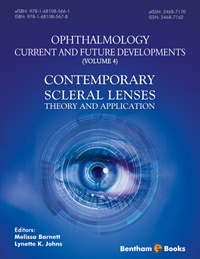Abstract
Scleral lens indications are well established in published literature, beginning with descriptions of blown glass shells that were the precursors of scleral lenses in the late 1800s. Fick and Kalt explored the potential for optical correction of corneal irregularity in keratoconus with their original lenses, while Mueller described the use of a blown glass shell to correct significant myopic refractive error. Publications predating the introduction of rigid gas permeable scleral lenses in 1983 described the use of molded scleral shells or lenses to improve vision in cases of significant corneal irregularity, to protect the ocular surface and to correct refractive error. The introduction of rigid gas permeable contact lens materials sparked renewed interest in the scleral lens modality. Since Ezekiel’s description of the use of rigid gas permeable scleral lenses in the management of keratoconus, high ametropia, marked corneal scarring and corneal surface compromise in 1983, interest in scleral lenses has steadily grown. Whenever a scleral lens is placed on a diseased eye, practitioners must be aware that it is a therapeutic medical device. Use of scleral lenses in the management of ocular disease requires an understanding of the disease process. The eye should be monitored carefully to see that the desired outcome is obtained, and the therapeutic approach should be adjusted if the expected outcome is not achieved or if unexpected complications arise. Cooperation and collaboration with other eye care providers and specialists within other areas of medicine will allow practitioners to maximize the benefit for our patients.
Keywords: Auto-immune diseases, Clinical populations, Corneal ectasia, Corneal scars, Cosmetic, Dryness, Indications, Irregular corneas, Keratoconus, Keratoglobus, Managing expectations, Ocular surface, Ocular surface protection, Optics, Pellucid marginal degeneration, Post-corneal transplant, Prosthetic, Risk/benefit, Secondary corneal ectasias, Trauma.






















